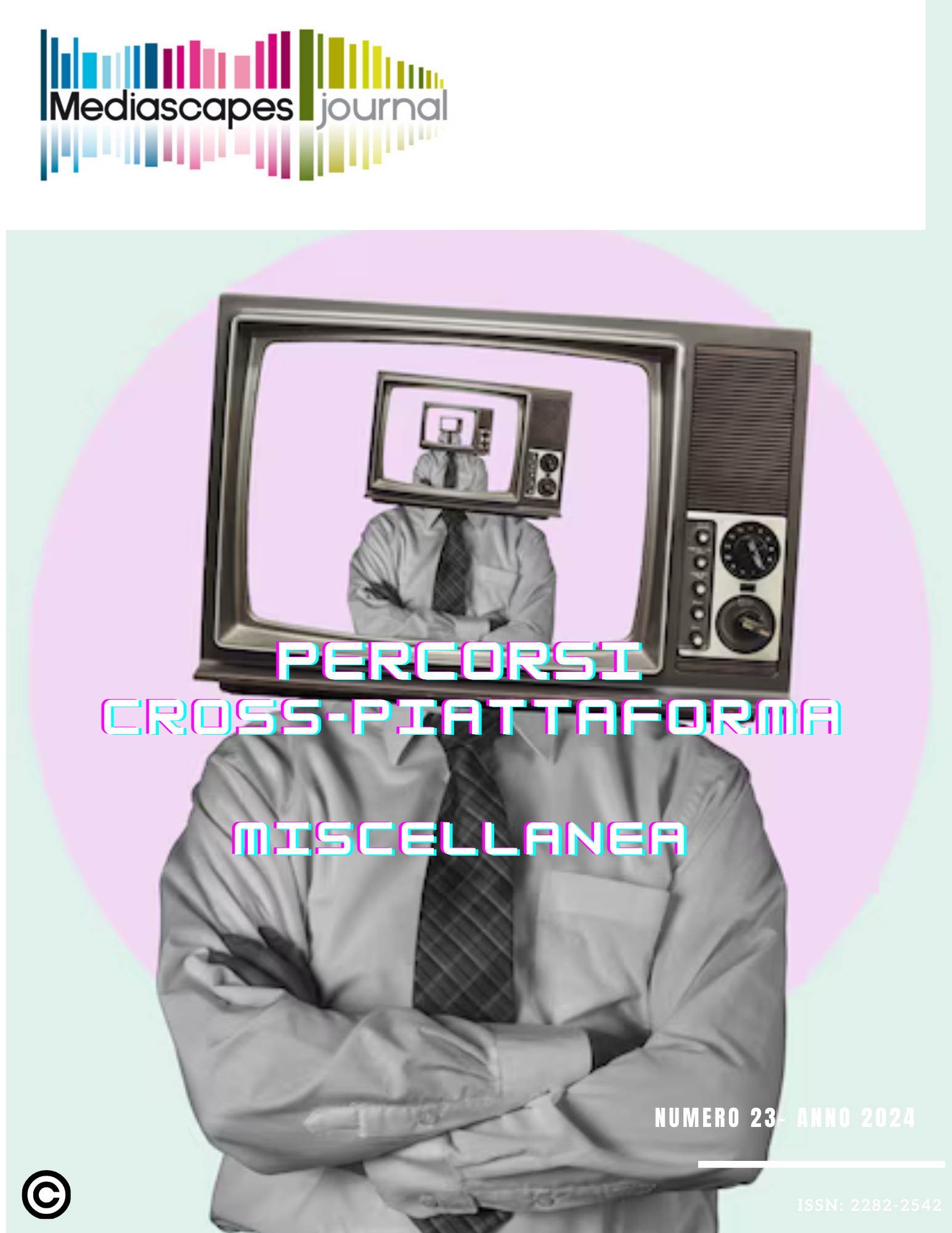L’operazione documentaria attraverso gli ambienti mediali interattivi
Il caso di Chloé Galibert-Laîné
Keywords:
media environments, interactive media, desktop documentary, Chloé Galibert-LaînéAbstract
The contemporary scenario demands an interpretation of reality as inherently hybrid, and of the individual's condition as osmotic and “ecomedial”, marked by a constant – and seamless – transition between off- and on-screen realities (that of the digital devices we use, which configure – and are configured as – the environments we inhabit). Contemporary audiovisual production seems to take this into consideration by configuring multiple forms of interaction with interactive digital media. If fictional desktop cinema has demonstrated the possibility of representing these media spaces as environments in which to develop sometimes complex stories, also using the framework of film genres, other forms of experimentation lie outside the regime of fictional storytelling, establishing a fruitful dialogue with contemporary documentary forms. I intend to focus attention precisely on this aspect. What is at stake is both the modes of access to narrative materials and their organization during consumption – as in the case of web documentaries – and the interplay between archival material research and imaginative configuration of the film during production, as in the desktop documentary, where what Francesco Casetti has defined as a complex “ecology of operations” seems to be at the center of attention. In all these forms of contamination between audiovisual production and interactive digital media, a fusion between contemporary documentary cinema, archival materials, and digital technologies emerges and reinforces itself, also manifesting in the visual-organizational fabric of the film, a peculiar perceptual and operational ecology characterizing the relationship between user and interface, which needs to be carefully examined and understood. This article is structured into three parts. In the first part, I will attempt to theoretically define the ecological configuration on which today’s media system – within which we act and carry out our daily activities – is based. I will specifically outline the peculiar aspects of the contemporary ecological perspective, which presents significant differences compared to traditional media ecology. In the second part, I will focus on two films by the French scholar and filmmaker Chloé Galibert-Laîné with the aim of investigating certain modes of “staging” contemporary digital media made possible by audiovisual media. In the conclusions, I will attempt to advance some considerations regarding the narrative and aesthetic specificities of the desktop documentary and its potential to intercept and narrate a reality that seamlessly traverses both material and virtual spaces.
Downloads
Published
How to Cite
Issue
Section
License

This work is licensed under a Creative Commons Attribution 4.0 International License.
Mediascapes Journal is published under a Creative Commons Attribution Licence 4.0.
With the licence CC-BY, authors retain the copyright, allowing anyone to download, reuse, re-print, modify, distribute and/or copy their contribution. The work must be properly attributed to its author. It should be also mentioned that the work has been first published by the journal Anuac.
Having published these contributions for the first time, Mediascapes Journal will have the right to publish them integrally or partially as reprints or possibly as part of a thematic issue, in both digital and printed format.
It is not necessary to ask further permissions both to author or the journal.


